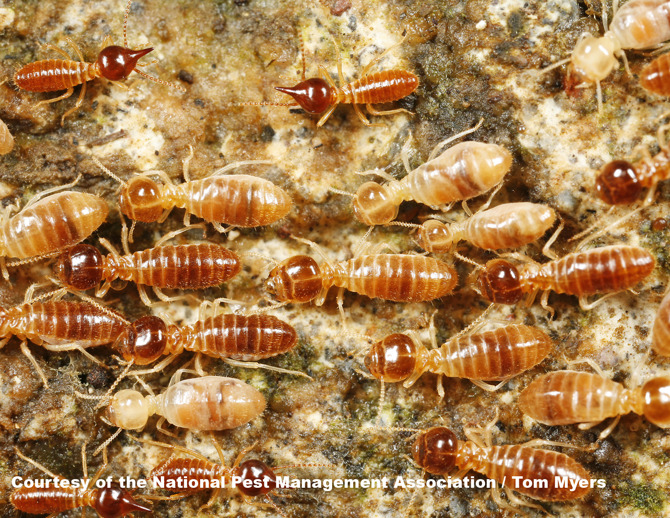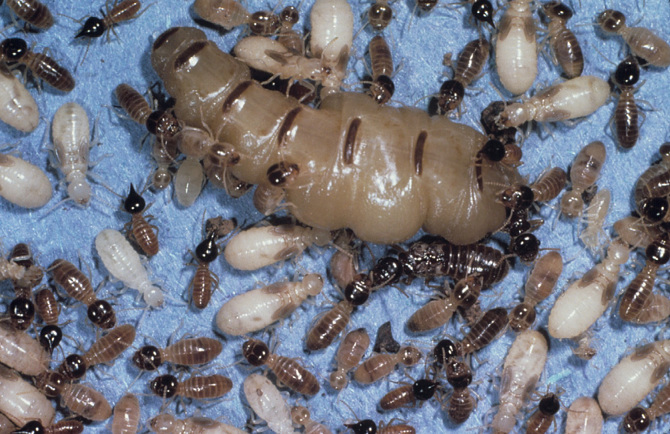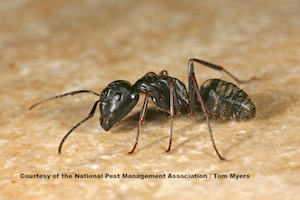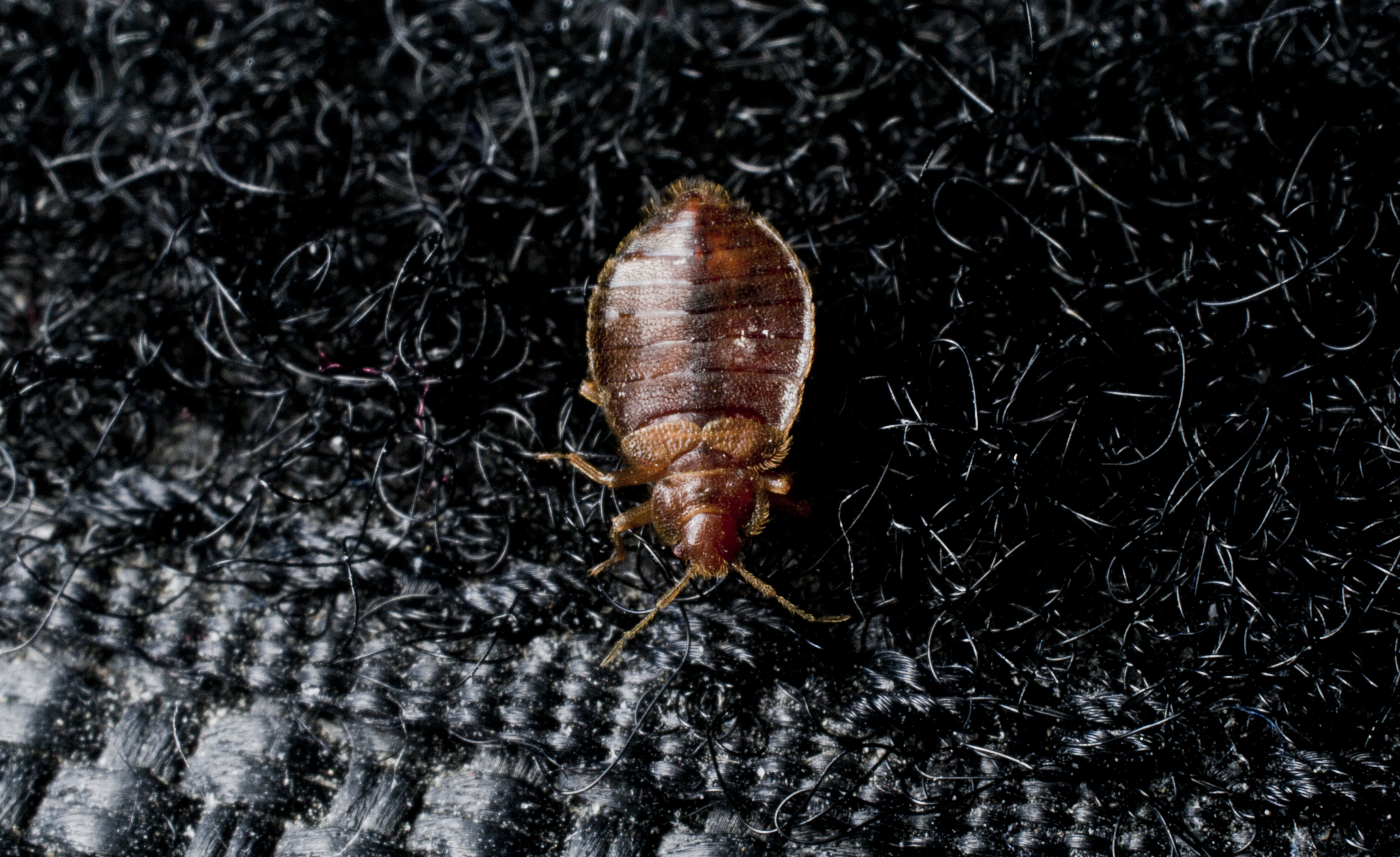Beware: Invasion of the Coneheads
By Dr. Barbara L. Thorne - Department of Entomology, University of Maryland
A hungry and rapidly growing species of termite snuck into Florida from the tropics and is living in sections of the Dania Beach area of Ft. Lauderdale. This species, scientific name Nasutitermes corniger, is now nicknamed the “Conehead Termite” because of the distinctive cone - or teardrop-shaped head of the soldier caste. When it was first discovered in Florida in 2001, this species was called the “Tree Termite,” but that nickname led to confusion—primarily the incorrect inference that it always lived and nested in or on trees, as well as the false sense of security that “at least my house is safe because the ‘Tree Termite’ only eats trees.” Not! This highly adaptable termite nests in or on—and happily consumes—trees, shrubs, roots, structures, fences, wooden furniture, scrap wood, paper products and probably many other items made of cellulose. It may build nests on open ground with no trees close by.

This challenging species has tremendous potential for swift dispersal, survival in a variety of structural and natural habitats across a broad geographic range, and decisive economic impacts. There is a sense of urgency to act now to halt and hopefully eradicate this exotic species because if it spreads further and becomes irreversibly established in the United States, it could become a powerfully damaging, expensive, obnoxious, and permanent pest.
What should I look for to identify a Conehead Termite infestation?
Three features of this species enable swift identification:
- Tunnels: Coneheads build extensive networks of narrow (usually half-inch wide or less) brown “tunnels” or termite highways on the sides of trees, houses, walls or almost any surface. Around homes, the galleries often track along lines such as mortar joints between layers of brick, or the junction between a house wall and the roof eaves. Termites are busy under these covered galleries, marching 24/7 to and from food and water resources. Often these tunnels are the first sign of an infestation. Other termites in the U.S. build tunnels too, but Conehead gallery networks are lengthy and prominent, and if you remove a short section, amazing insects will run out, as described below.
- Coneheads: The soldier form of this termite has a very distinctive, dark “conehead” or teardrop-shaped head. If you break open an active tunnel, termites each about the size of a grain of rice dash out, including the odd-looking conehead soldiers which comprise up to 20-30% of the individuals in a colony. No worries – these termites will not bite or sting.
- Nest: This invasive termite builds conspicuous dark brown nests, usually in the shape of a large ball or watermelon with a crisp, bumpy surface. Nests may be on, in, or by a tree, shrub, or structure, or sometimes sitting on open ground. Young colonies remain hidden for several years while they build population size before their “big reveal” when they construct a visible nest. The initial phase of construction creates a nest about the size of a tennis or softball, but healthy colonies rapidly expand their home such that a nest the size of a basketball or even larger may grow within a few months, and produce swarmers (alates) within a year. Because only older colonies build nests, however, foraging tunnels are found frequently without an apparent nest, which is still very important and we urge you to report the discovery.
To report a location of Conehead Termite activity, even if you’re not sure but would like it checked (free inspection and treatment), please call Florida’s Department of Agriculture and Consumer Services (DACS) at 850-617-7997.
How are Conehead Termite infestations treated?
Because the goal is to evict this species from the U.S., any live Coneheads must be treated, whether they’re in a house, yard, or even in an abandoned lot where they’re munching on items no one seems to care about.

Photo credit: ©Barbara L. Thorne
Florida’s new overall treatment protocolis to remove and destroy (by incineration) accessible nests, and use termiticides to comprehensively treat activity centers such as foraging galleries, infested wood and other dense aggregations of termites. This aggressive combination of strategies should kill many colonies, and reduce overall population size, health and integrity of any surviving Conehead societies enough to drastically reduce swarmer production and dispersal, thus substantially slowing and hopefully halting expansion of the infested area.
► These termites don’t bite or sting, but do not try to treat them yourself because the colony may move rather than die. Call the state hotline number above, or a certified pest management professional.
► Conehead attempts to “hitchhike” to colonize a new area, in another part of Florida or beyond, must be foiled by preventing transport of trees and shrubs, wood debris and furniture out of the infested and surrounding (high risk) locations, and by keeping vigilant watch to quickly notice – and immediately treat – any new infestations.
Acting quickly and decisively now, and committing to treatment and inspection vigilance for many years ahead, will be key to eliminating the current Conehead Termite infestation and preventing future established populations.
Thanks for helping to stop the spread of this destructive, invasive bug!

Learn About Ants
Ants are a common pest homeowners struggle to eradicate. Learn more about them!

Bed Bug Pest Guide
Traveling this summer? Be sure to keep an eye out for bed bugs! Use our Pest Guide to help identify this pest.

NPMA's What Grows There? Project
Check out NPMA's What Grows There? project to learn how pests, such as flies, cockroaches and rodents, can spread germs throughout a home.
Find a PEST PRO in your area

Learn About Ants
Ants are a common pest homeowners struggle to eradicate. Learn more about them!

Bed Bug Pest Guide
Traveling this summer? Be sure to keep an eye out for bed bugs! Use our Pest Guide to help identify this pest.

NPMA's What Grows There? Project
Check out NPMA's What Grows There? project to learn how pests, such as flies, cockroaches and rodents, can spread germs throughout a home.
